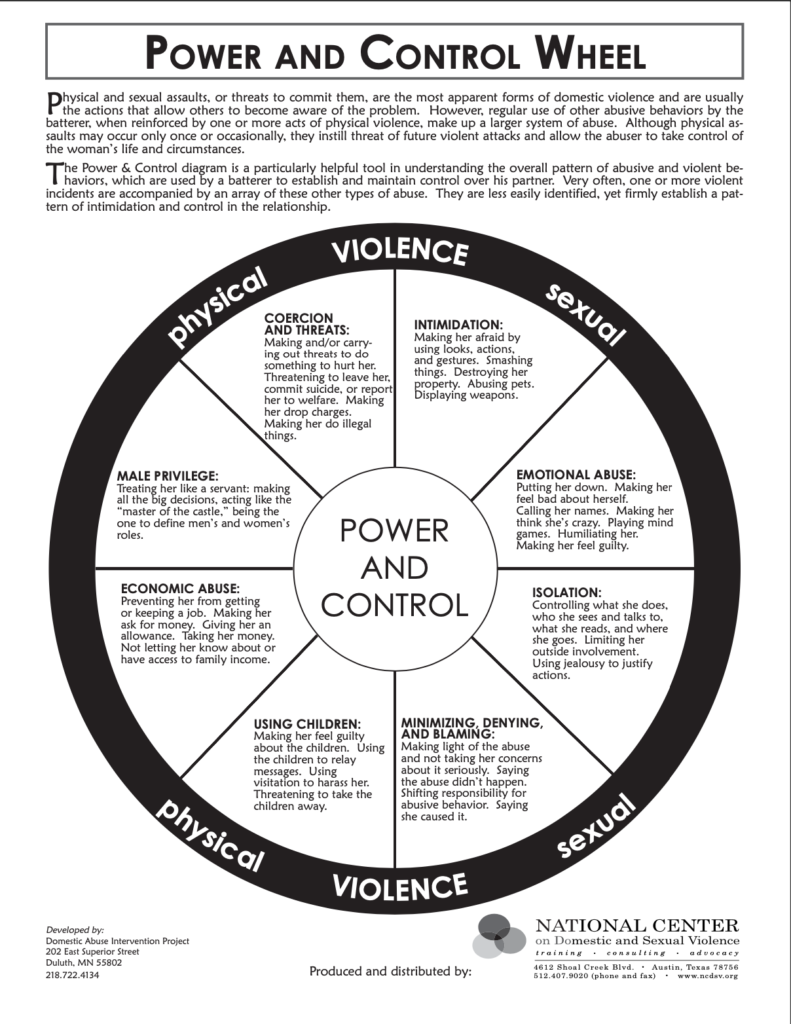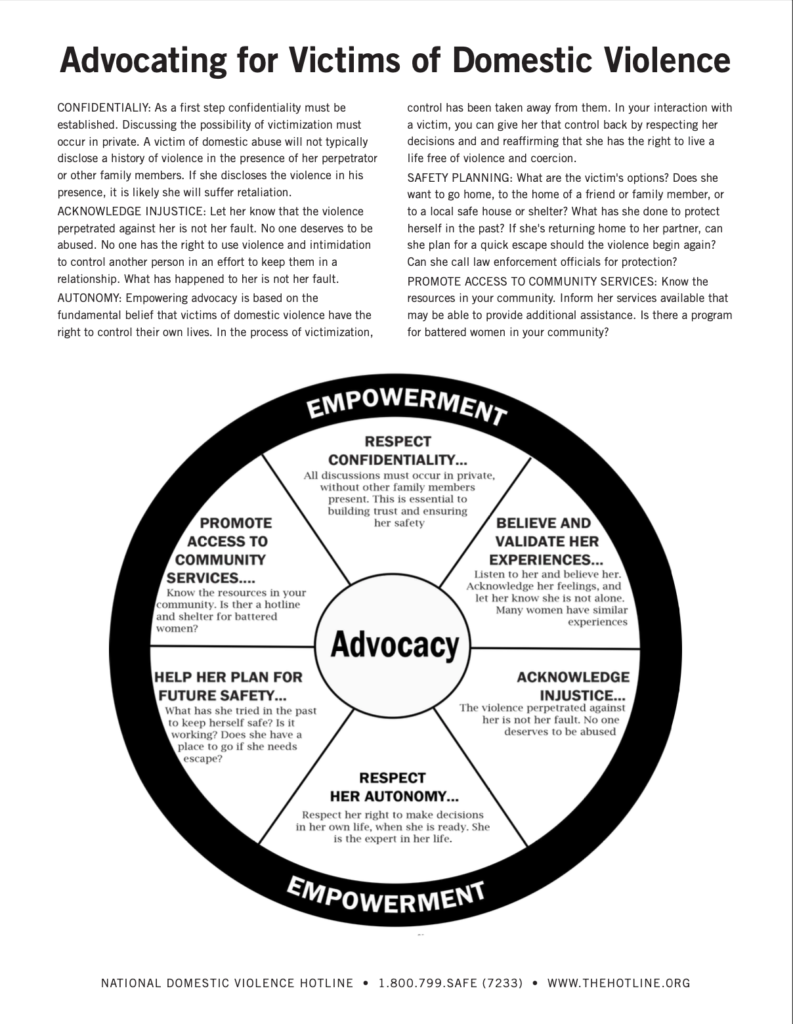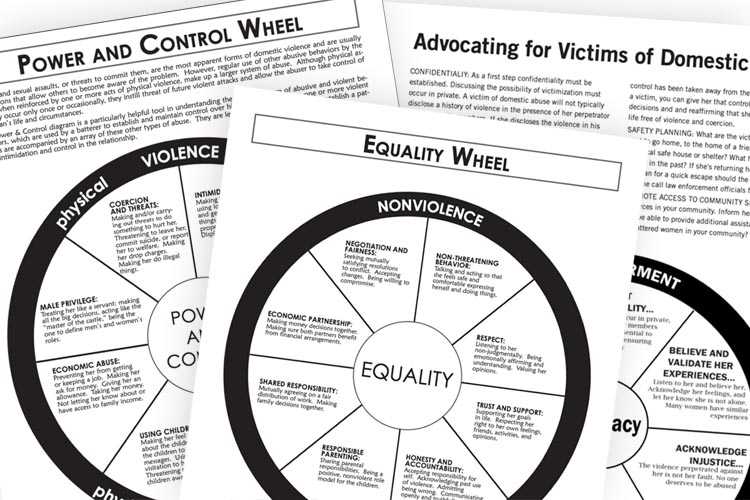Trading the Power and Control Wheel for the Equality Wheel
RAFT Team, March 2, 2020
Almost all those who work in Advocacy know about the Power and Control Wheel. Developed in the early 80s in Duluth, Minnesota by the Domestic Abuse Intervention Project (DAIP) staff, it's a tool that visually describes domestic violence relationships. Over the course of several months, the staff met with women in several groups across Duluth who had all survived domestic battering.
The Power & Control Wheel
Through their many discussions and intentional questions, the DAIP staff was able to narrow down some of the basic behaviors or “tactics” used by abusive partners. They found that this violence is generally characterized by a pattern of action by an individual in order to obtain power and control over his partner. Often this is not the overt motivation, as many batterers think power and control is their right and should not have to be earned. That is why power and control sits at the center of the wheel, the behaviors make up the spokes, and physical and sexual violence on the rim hold it all together.

Because many battered women don’t know what a supportive relationship looks like, this wheel has helped them identify abusive behavior more easily. It allows them to name what they've experienced again and again.
The Equality Wheel
A short time later, this same group developed the Equality Wheel. This allowed both women and men to understand the difference between a violent relationship and one that was healthy and supportive for both individuals. Specifically, the Equality Wheel was designed so men could see what needed to occur in order to change the relationship from an abusive one to a non-violent one.

This very intentional design allows the wheels to be used together so men and women can compare and contrast behavior. In fact, if you lay these wheels over one another, the stark contrast is profound. Once necessary change is understood, the transformation can begin.
The Advocacy Wheel
In the same vein, the National Center on Domestic and Sexual Violence created the Advocacy Wheel to describe the major components of what balanced domestic violence advocacy can look like.

Advocacy sits squarely in the center of this wheel, surrounded on the outside by empowerment. TheHotline.org aptly describes the spokes:
- Respect Confidentiality. All discussions must occur in private, without other family members present. This is essential to building trust and ensuring her safety.
- Believe and validate her experiences. Listen to her and believe her. Acknowledge her feelings, and let her know she is not alone. Many women have similar experiences.
- Acknowledge injustice. The violence perpetrated against her is not her fault. No one deserves to be abused.
- Respect her autonomy. Respect her right to make decisions in her own life, when she is ready. She is the expert in her life.
- Help her plan for future safety. What has she tried in the past to keep herself safe? Is it working? Does she have a place to go if she needs escape?
- Promote access to community services. Know the resources in your community. Is there a hotline and shelter for battered women?
Seeing an Advocate’s job laid out in such clear terms in the Advocacy Wheel clearly shows the depth of change an advocate can affect daily. It’s a great way to explain the importance of what Advocates do, and to encourage others to consider taking a role in the lives of survivors in some capacity or another.
While not everyone has chosen a career in Domestic Violence Advocacy, everyone can be an advocate. It takes a listening ear, empathy, and a determination to empower rather than make choices for a survivor.







